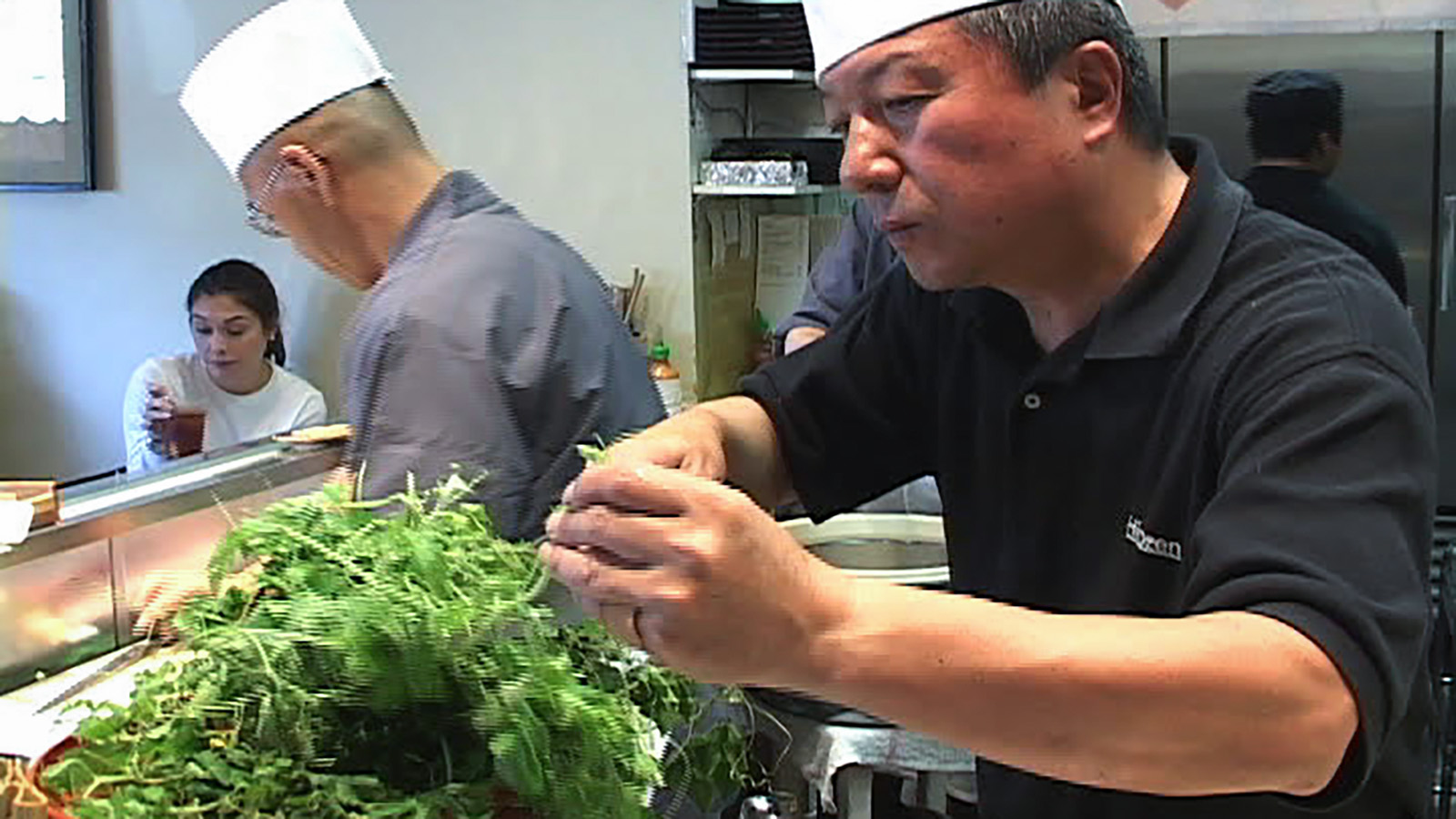‘Hiro’s Table’ documents establishment of authentic Japanese restaurant in LA

“Hiro’s Table,” a documentary film by alumna Lynn Hamrick, chronicles 16 years in the life of Hiroji Obayashi and his wife Yasuyo Obayashi as they pioneered the farm-to-table Japanese food scene in Los Angeles. (Courtesy of Lynn Hamrick)
By Max Kieling
April 30, 2019 10:01 p.m.
“Hiro’s Table” follows a family coping with loss, success and the relentlessly fast-paced Los Angeles restaurant scene.
UCLA alumna Lynn Hamrick directed, wrote and produced the documentary, which depicts master chef Hiroji Obayashi and his wife Yasuyo Obayashi over the course of 16 years as they pioneer a new restaurant model in LA: an authentic Japanese farm-to-table eatery called Hirozen Gourmet. “Hiro’s Table” was released Nov. 11 and will be screened May 18 at the American Asian Latino Film Festival in New York City. Hamrick said she aimed to highlight how the restaurant introduced unprecedented ideas for Japanese food to LA.
“Hirozen Gourmet served fresh, traditional Japanese food out of a little restaurant in a strip mall,” Hamrick said. “This was something Los Angeles had not really seen before.”
Established in 1989, Hirozen Gourmet was a mom and pop restaurant and one of the first to introduce authentic Japanese cuisine to Los Angeles, as opposed to the popular Americanized Japanese food. When he and his wife owned the restaurant, Hiro Obayashi served farm-to-table vegetables, fresh sushi and original fusion blends, including a Japanese version of chile relleno, a Mexican dish made from hot peppers. Hiro and Yasuyo Obayashi no longer work at the restaurant and it is now named Matsumoto after a chef that previously worked there with the couple. Hiro Obayashi’s curious attitude toward food was reflected in his dishes, said co-producer, editor and UCLA alumna Gail Yasunaga.
“The idea of fusion and blending cuisines together was something that was new in the 1980s. We really wanted to see what it would become,” Yasunaga said. “He was so dedicated to achieving his vision for what he was bringing to LA.”
[RELATED: Documentary works to destigmatize mental health in Asian-American community]
“Hiro’s Table” also aimed to capture the Obayashis’ attention to freshness and quality, Yasunaga said. Hirozen Gourmet offered seasonal cooking and one of the first farm-to-table dining experiences. On his one day off, Hiro Obayashi would spend his time traveling to farmer’s markets around LA, Yasunaga said, and this dedication was another focal point of the film. They incorporated these details through interviews and footage.
Along with the focus on fresh food, Hamrick said she also wanted the film to highlight Hiro Obayashi’s commitment to tradition. The film accentuated the restaurant’s combination of traditional Japanese food with seasonal, fresh California vegetables, Hamrick said. It also follows Hiro Obayashi through his creation of fusion dishes. Candice Obayashi, the chef’s daughter who helped frequently around the restaurant, said her parents introduced LA to authentic forms of sashimi, sushi, fresh fish and other traditional dishes that many Angelenos were not that familiar with at the time.
“My father’s goal was also to educate the public on what real Japanese food is,” Candice Obayashi said. “Not just chicken teriyaki, but sushi with special, authentic fish selection.”
Omakase, or a type of meal that is entirely coursed by the chef, was another Japanese tradition that the restaurant offered. The film showed how Hiro Obayashi brought in these traditional aspects of Japanese cuisine through his training in Japan and combined them with obscure fish selections and presentation, Hamrick said.
However, Hiro Obayashi’s food was only one component of “Hiro’s Table.” The film examined his attitude and philosophy toward food as well, Yasunaga said, particularly by observing the restaurant’s practices and through interviews with Hiro Obayashi.
“Hiro Obayashi’s personality and cooking philosophy really inspired the documentary,” Yasunaga said. “He had very high standards and his primary goal was to serve the individual.”
[RELATED: Natural products take the cake in alumna’s food-ingredient brand]
Hiro Obayashi was so dedicated that he would take into account the number of customers, as well as their ages, genders, food preferences and even their occupations, Candice Obayashi said. For instance, he would give his younger customers and children less intense flavors than his older patrons.
Hiro Obayashi’s family story and context shone through in the documentary in the interviews and scenes of the family working together in the restaurant, Yasunaga said. The couple immigrated to LA from Japan and initially struggled to create and maintain their restaurant. The film shows that it was especially difficult for them because they were not located in an enclave like most Japanese restaurants at the time, Yasunaga said, but rather positioned in Beverly Grove – one of the most expensive areas in the city. Yasunaga said the family overcame this by creating relationships with their customers through food, as Hiro Obayashi relayed in the film, eventually establishing themselves as a popular restaurant in the area.
Apart from offering insight on Hirozen Gourmet’s inventive and traditional menu, she said the film focuses on the Obayashi family and their struggles and success in the restaurant business. It is not all about food, Hamrick said, but also about philosophy and family.
“So many people came there at least once a week or even several times a week, and there were some older people who ate there every day for 10 years,” Hamrick said. “The film is a portrait of a hardworking immigrant family who ultimately achieves success and nurtures their community.”

